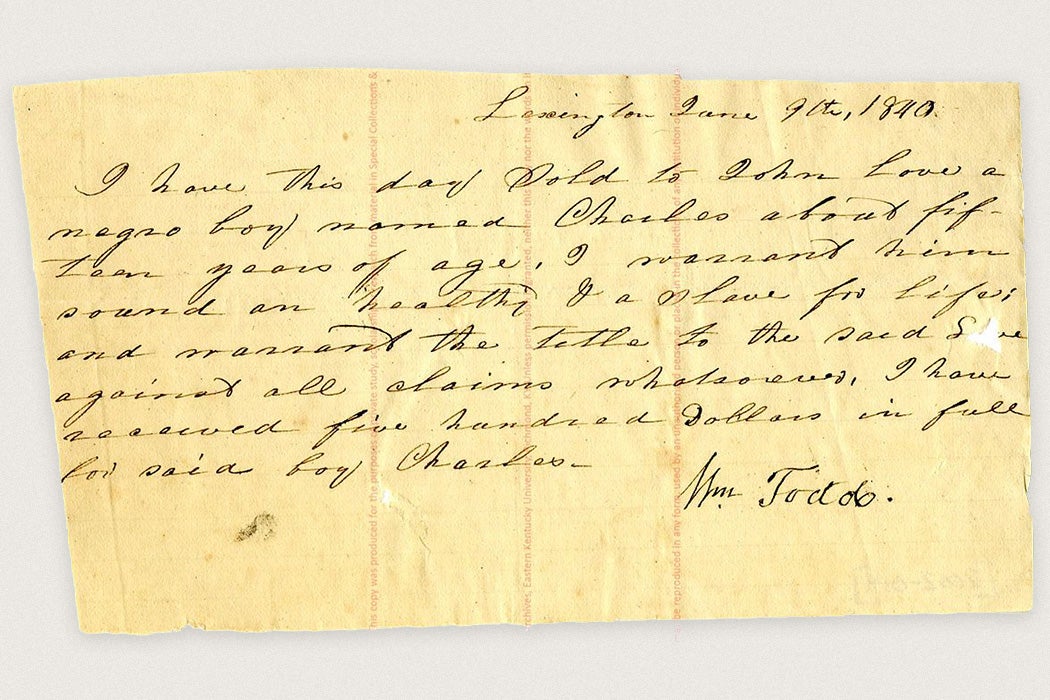KNOW ALL MEN!
“Know All Men by these presents” is the standard opening for nineteenth-century bills of sale. This common contractual language was a translation of noverint universi, a Latin phrase meaning, essentially, “Everyone, take note.”
And so the documents call out to us. Pause. Behold.
The library of Eastern Kentucky University has shared their American Slavery Collection, a small cluster of seemingly simple receipts and transactions which do, indeed, call for us to take note. We may not all be men. And we certainly were not present. But the digitization of these documents cries for our attention, and, surely, attention must be paid. This collection contains only sixteen documents, and they came from a variety of sources: a campus museum collection, an auction, a donation from a private collection, etc. But, now assembled, they tell a quiet and cruel story evident in the ways in which lives are listed in ledgers.
“Know all men by these presents,” wrote Jno (John) P. Sasseen in his bill in 1835, to announce that a small girl, ten-year-old Jane, was now his.
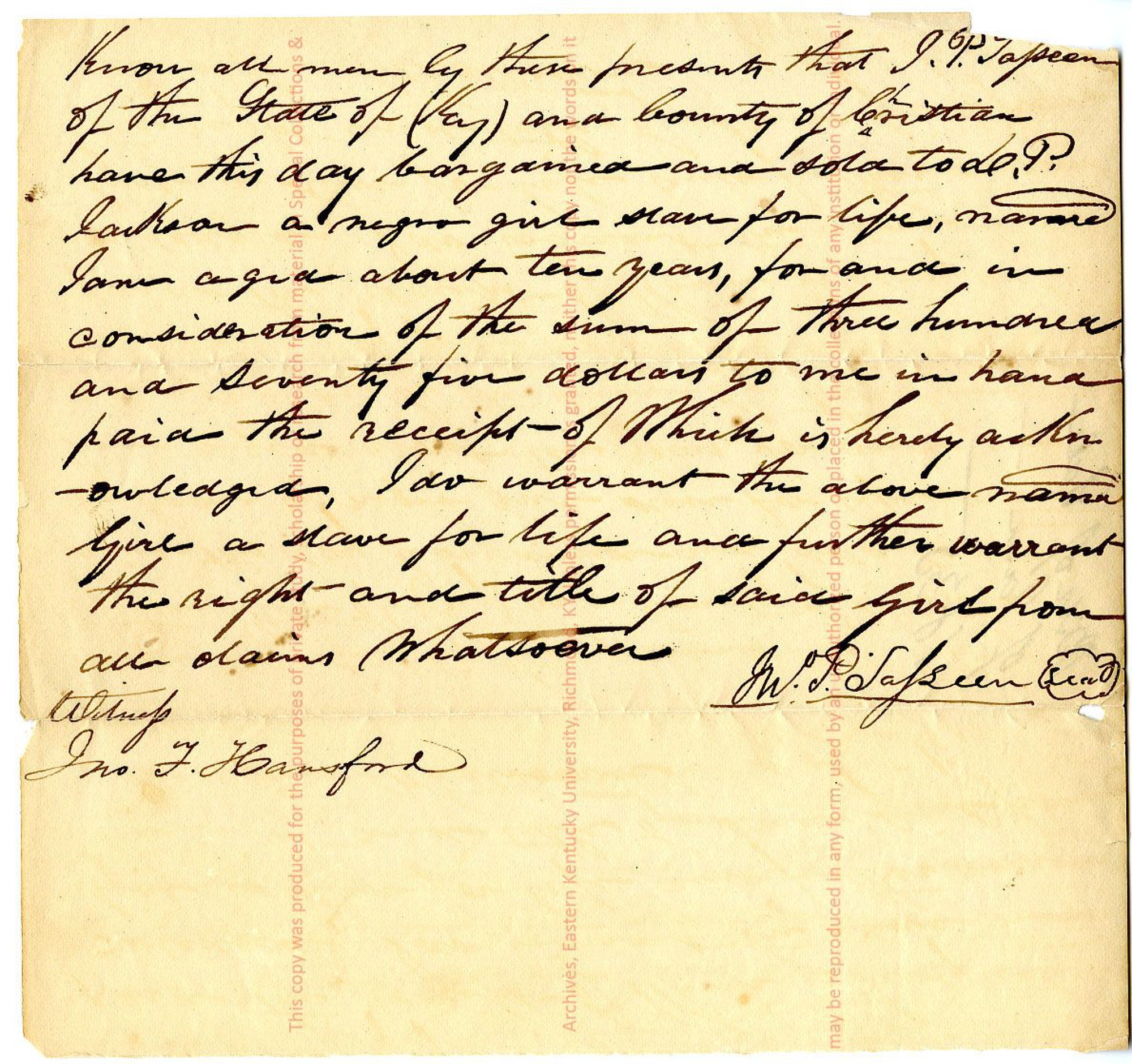
He was so confident in this purchase, this transaction, and his fresh legal claim that he was ready to warrant and defend it as necessary.
“I do warrant the above named girl a slave for life and further warrant the right and title of said girl from all claims Whatsoever.”
Sasseen wasn’t ready to defend Jane. He was ready to defend his total mastery and control of her young body and unknown future.
Teaching history is ever harder in these parlous times. And the history of enslavement is perhaps the most vexed topic to discuss clearly, thoughtfully, honestly, and with a sensitivity to both the material and to the audience. These simple bills of sale featured in this collection, most of them only a single paragraph on a single page, are eminently teachable. And terrifying. This use of legal terms isn’t a hindrance. For students accustomed to clicking on user agreements and skimming legalese even as it flies by their eyelids, know well that legal language is a hindrance and a formality but an unavoidable part of life. And while they may choose to skip or skim it before clicking an “I accept these terms” box—they do know that there might be something tricky or unpleasant in the unreadable jargon of our modern world. They’re cynical but in a hurry.
These bills of sale, some ten of which are reproduced with crisp clarity by the curators from the library at Eastern Kentucky University, similarly assume their readers will run their eyeballs swiftly across the paper and then perhaps file away the document somewhere, never to really look at it again. And yet men, women, and children were encased and surrounded by the language of cruel mercantilism. Certain details and names emerge and fill in just a little bit of the archival annihilation that has been the state of so much African American history.
For example, in March 1830, William Henry sold to Benjamin Powell of Scott County, Kentucky, “a negro girl by the name of Maryetta about three years old.”
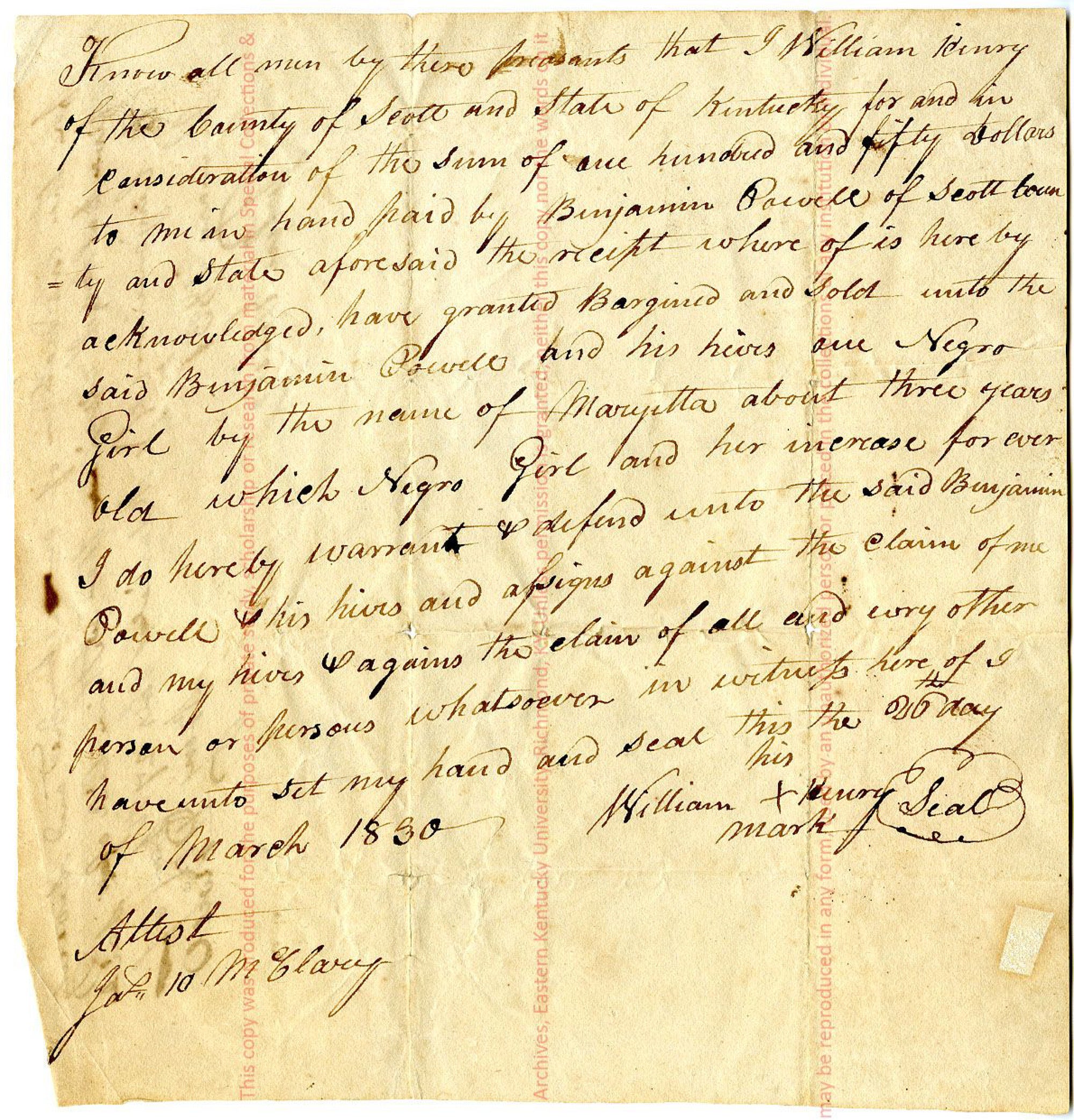
The sale price was $150, and an endorsement on the back indicates that Powell then sold the girl to Benjamin McDaniel on January 27, 1831, for $175. He made a $25 dollar profit for himself. And little Maryetta was shifted around as a casual ledger note.
The often complex nature of these transactions frames these bills, with addendums and complicates noted after an initial paragraph. In 1855, for example, one such bill noted that two teenagers, seventeen-year-old Perry, and fifteen-year-old Rhena, were sold together by Carolina McConnell to Samuel Wurts for $1400, with only $200 being paid down and the other $1200 due a year later at 6 percent interest.
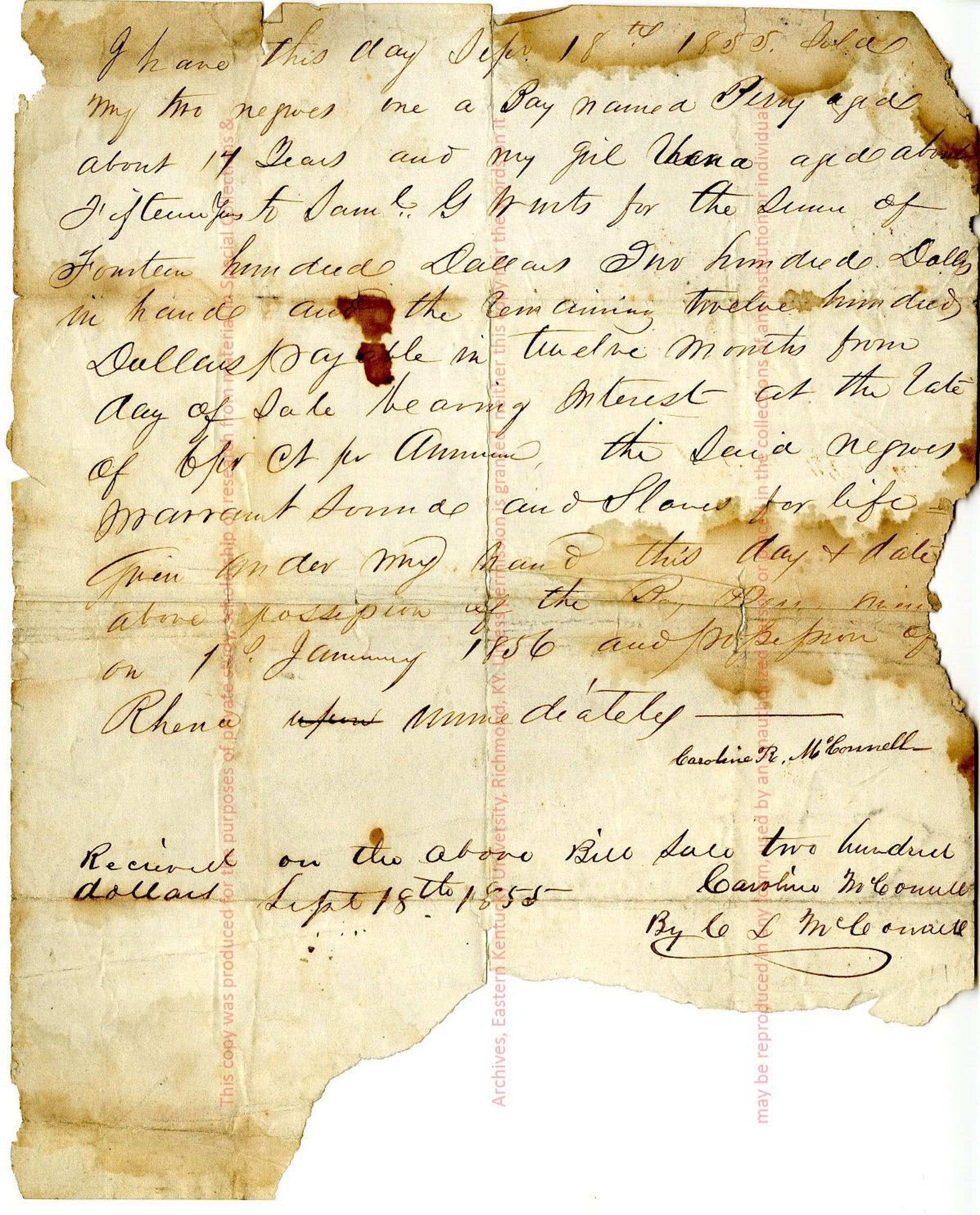
A note adding a receipt for the down payment of $200 was added to the end of the bill. Why did Carolina identify Rhena as “my girl” while Perry was given no such description in the bill? Had Rhena been brought up closely within the McConnell household? Did she have a particular kind of relationship with her enslaver? At age fifteen, might there have been particular reasons Caroline McConnell wanted Rhena out of the household? Was Perry an unrelated teen or perhaps a brother of Rhena? Or perhaps a boy that simply came into the possession of McConnell in some other way? Could he have been a husband or lover to Rhena? Did they find some comfort in knowing they would be sold to another enslaver together?
We cannot know any of these answers. Yet, while these bills all differ in the ways they bury the life stories of the individuals within the transactions, we do see hints that offer moments of speculation and imagination, which are some of the few tools we have to limn such lives.
Some of these are fully transcribed, and others are summarized. To work through details will require enlarging and peering into the cursive lines of cruelty. But the sharply digitized images make what might otherwise be intimidating nineteenth-century handwriting, often sourced in the language of a slaver economy, to be accessible and legible in more ways than one.
While there are ten bills of sale in this collection, there are additionally two receipts for boys: fifteen-year-old Charles and eight-year-old James, who see their lives upended in banal receipts similar in structure to the ten bills of sale.
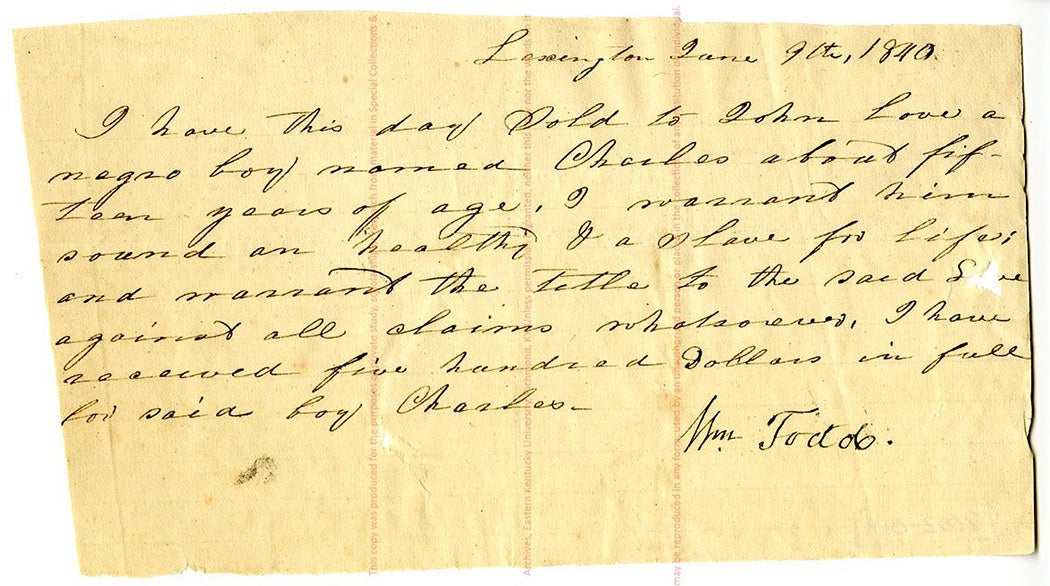
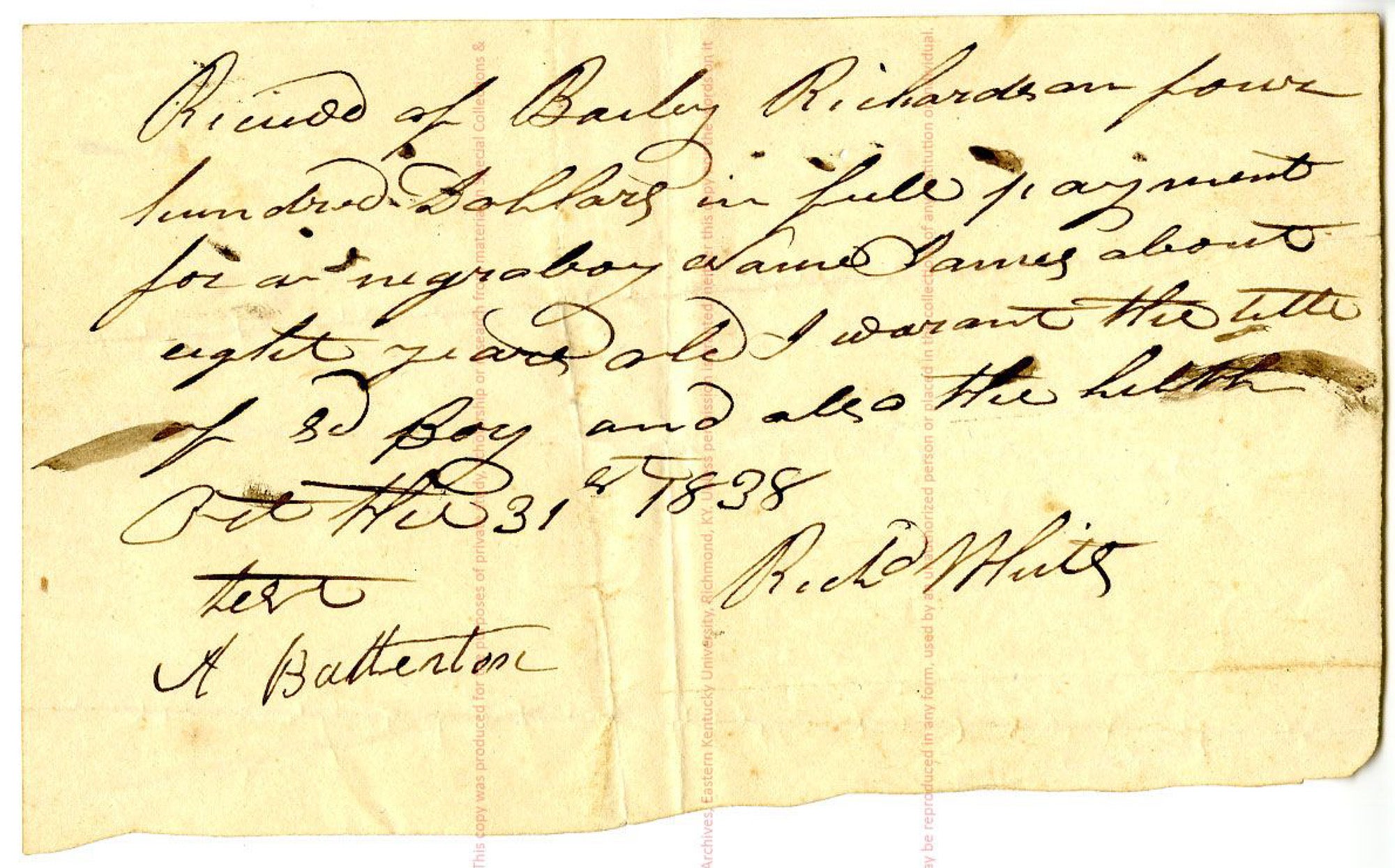
One astounding item that also features in this collection is a beautifully written manumission paper testifying to the uncommon freedom granted George in 1819. It appears that George was purchased or an agreement of some sort was made between Thomas McClean, who had control over George, with a group of men representing the religious sect of society known as Shakers. They agreed that George would keep his freedom whether or not he chose to stay with the Shaker society; however, he would be forced to leave Kentucky and reside in “either of the free states” of Ohio, Indiana, or Illinois.
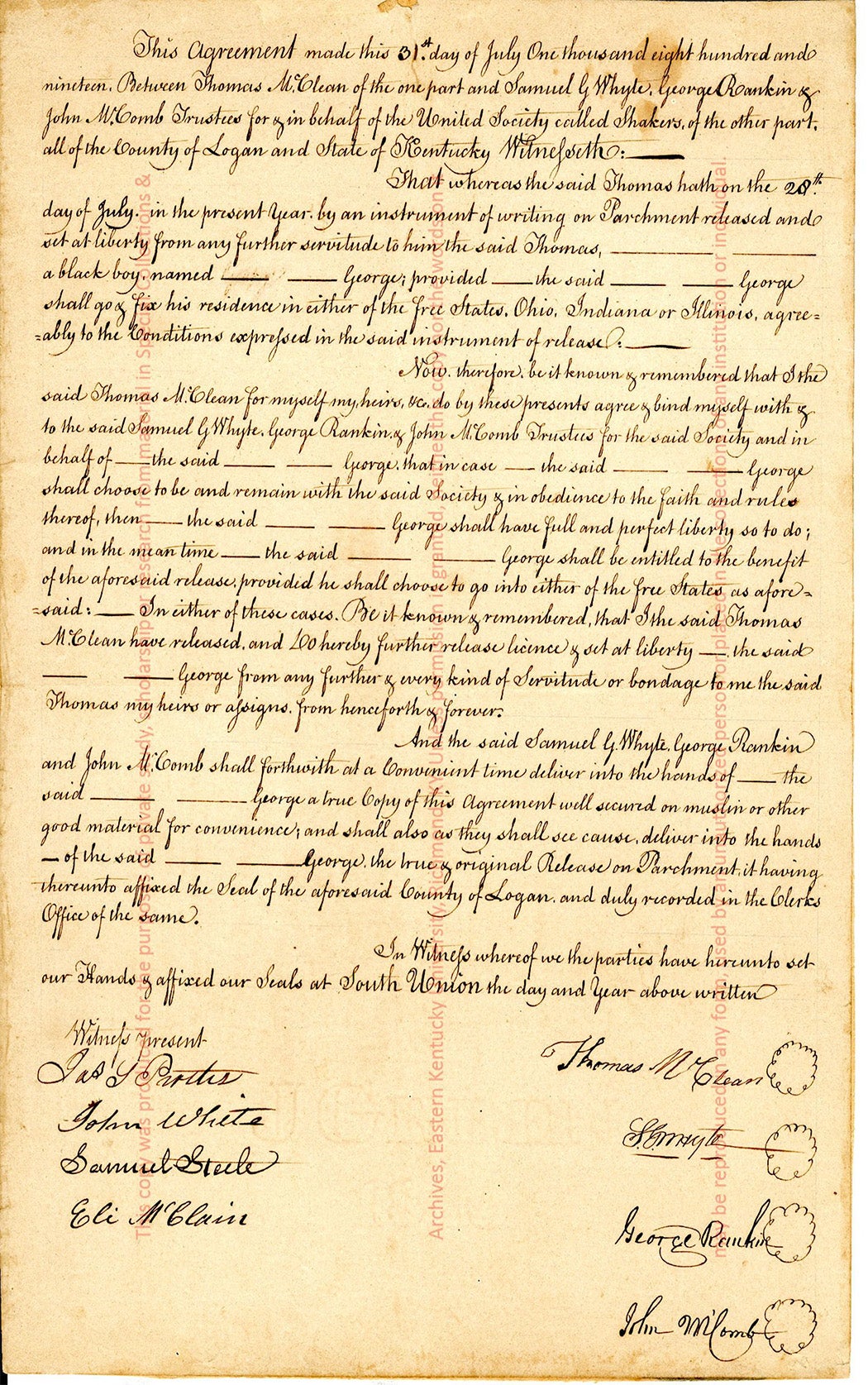
The document is evidently a copy of a precious manumission sheet (they even mention that other copies must be made, including one copy specifically written on muslin, presumably so it will be something George can easily carry on his person); it certainly stands in stark contrast to the bills of sale in this collection inasmuch as it represents a happier outcome and signals the actions of men who put into action their belief in equality.
And yet, even so, it demonstrates that George’s freedom was precarious and dependent upon the foibles or tenets of the spiritual beliefs of random white men he might encounter.
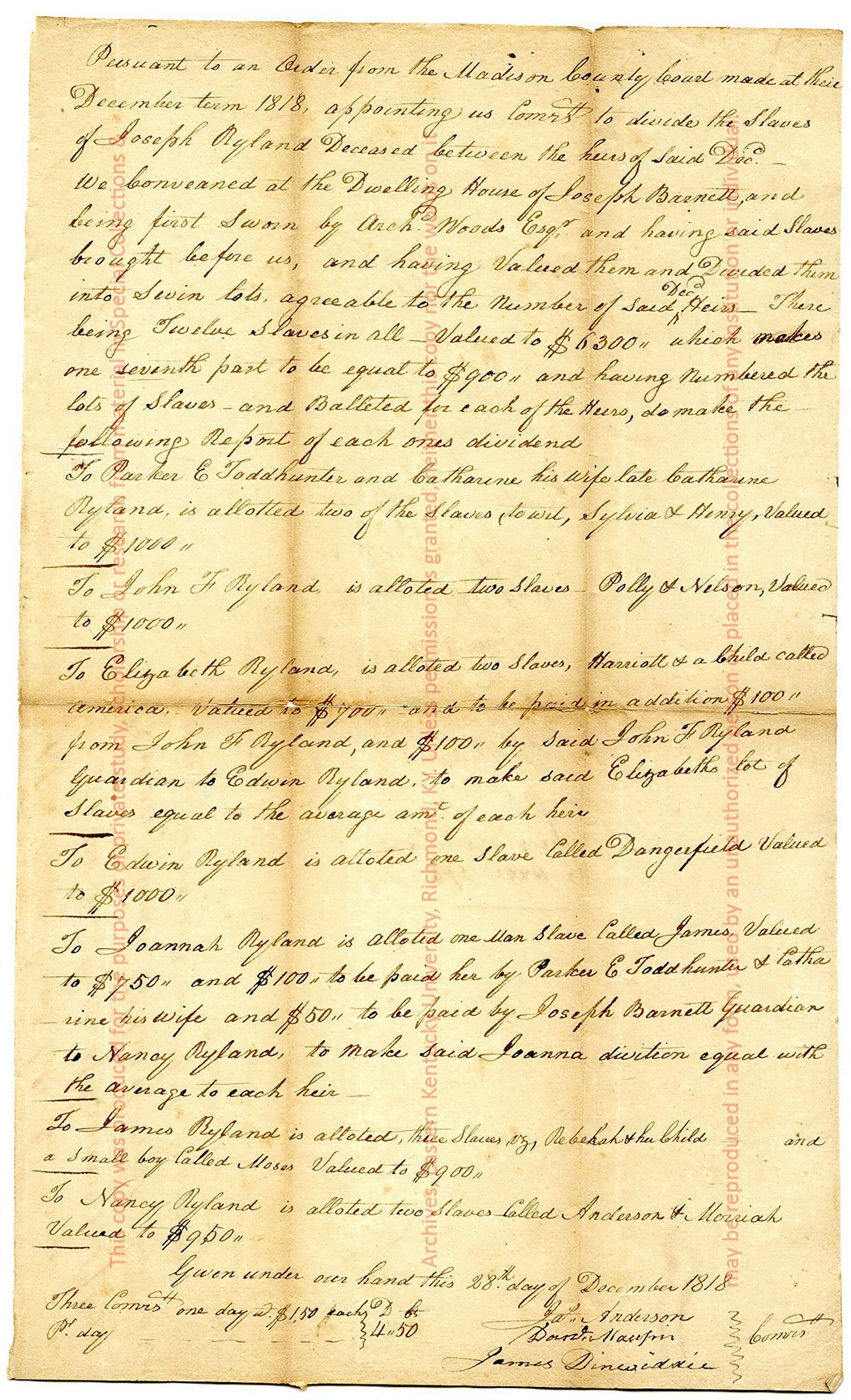
An estate settlement within this collection chronicles the ways in which the Ryland family of Kentucky distributed and shared the humans in their power after a white patriarch and enslaver died. The priority evident in this document is to ensure that the twelve enslaved people are distributed among heirs in such a way that their value is evened out in equal shares. So keeping enslaved families was not officially part of the equation; instead, the focus was on making sure each heir received approximately $1000 in value in terms of human property. When one heir received an enslaved woman, “Harriott,” and her child “America,” jointly worth $700, the document notes that other heirs would pay her money to make sure she walked away with roughly as much as they did.
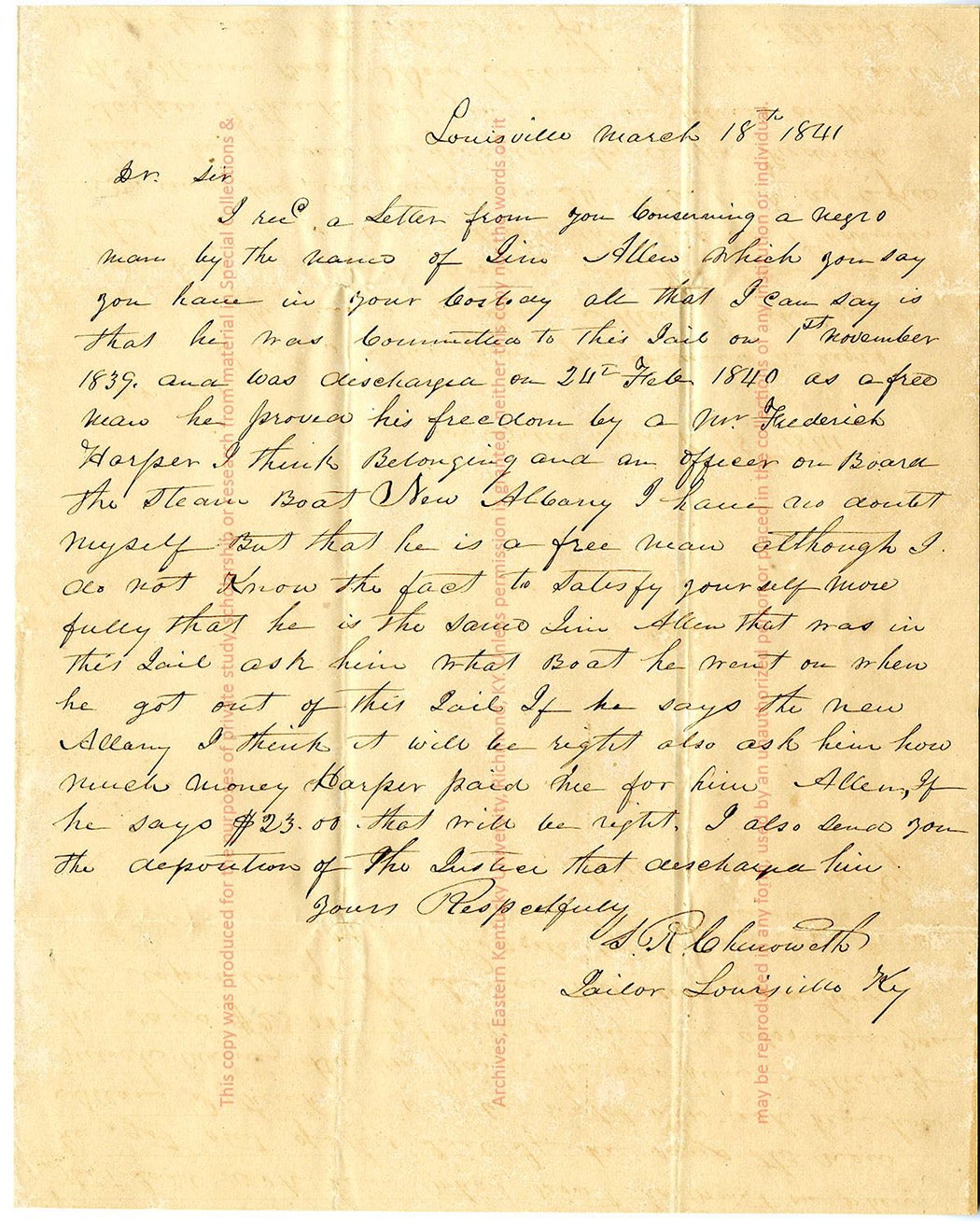
As always, though, even while the identity of Jim Allen and his free status is debated, it is assumed that any Black man should know his “value” in monetary terms—“ask him how much money Harper paid me for him,” the writer suggests.
Dear Sir, I received a letter from you concerning a negro man by the name of Jim Allen which you say you have in your custody. All that I can say is that he was committed to this jail on 1st November 1839, and was discharged on 24th Feb 1840 as a free man… . . Ask him what boat he went on when he got out of this jail. If he says the New Albany I think it will be right. Also ask him how much money Harper paid me for him, Allen. If he says $23.00 that will be right. I also send you a deposition of the Justice that discharged him. Yours Respectfully, S.R. Chenoweth Jailor, Louisville, KY
The one item which truly proves a counter to the obfuscations of the receipts and bills of sales, though, is a precious and sadly brief narrative: “A Sketch of the Life and Experiences of George White, a Colored Man, and Born a Slave—Written by Himself.—A Lesson to His Children.”

This autobiographical letter, drafted perhaps c. 1870, tells the life story of George White, who, although born enslaved and orphaned at a young age, instructed posterity to remember him by his mercy. White sketches out a tale of abuse, although he couches it in loving forgiveness for those who had wronged him, particularly in relation to how he had been promised freedom by his dying enslaver, a man who had not taken care ahead of time to prepare documents to carry out his wishes. He must have been too busy. Once the enslaver died, however, White was sold on the auction “block” to sympathetic white relatives of the dead man, who then allowed George to take his own savings and purchase and work off his freedom —which he went on to do. White reports that he was then able to build a life for himself and other members of his family by gradually purchasing their freedom as well.
It sounds like a happy outcome, but this transaction itself reminds us how enslavers couldn’t imagine inconveniencing themselves by actually allowing a man his freedom without personal compensation.
Weekly Newsletter
White wraps up his tale by noting: “I am now a very old man and expect soon to try the realities of a future life, and have had this brief sketch written out for me that my beloved children and grand-children and all others, in lowly condition, who may chance to see it, may be benefitted by the lesson to be learnt from the humble life of “Free George.”
The American Slavery collection of Eastern Kentucky University illustrates the calculations and ledgers that framed the transactions of white people engaged in the slavery economy of the time. Moreover, and of more significance, it illustrates how those calculations were felt in the bodies, the memories, and the legacies of the people who were subject to these exchanges.
This collection is no longer available via JSTOR; the links have been updated to reflect this.
